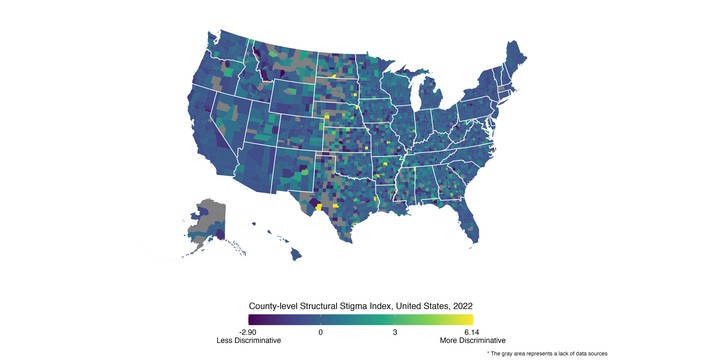Structural Stigma and Digital Intervention
 County-Level Structural Stigma Index, Yama Chang © 2023
County-Level Structural Stigma Index, Yama Chang © 2023In the United States, the experience of minority stress among LGBTQ+ youth varies across regions with high or low levels of stigma (e.g., laws, policies and cultural norms that limit the lives of individuals with stigmatized identities). The influence of stigma on responses to individual-level psychosocial interventions among youth remains unclear; however, stigma expands across structural, interpersonal, and individual levels. Social support may act as a buffer against the negative effects of minority stress in the context of structural stigma. Among LGBTQ+ youth who received a digital, single-session intervention (SSI) focused on minority stress, we investigated whether structural stigma and social support moderated treatment responses, such that LGBTQ+ youth in environments with high versus low levels of structural stigma would experience differential outcomes to the SSI, and such that LGBTQ+ youth with greater access to social support would enhance their gains from the SSI.
In this study, I analyzed data from 261 LGBTQ+ adolescents, aged 13 to 16 years, across 181 counties in 46 U.S. states, who engaged with the SSI. I created a factor representing structural stigma using confirmatory factor analysis at the county level. High levels of structural stigma reported at baseline did not moderate intervention responses to the SSI, either at post-intervention nor at two-week follow up. Similarly, high levels of social support reported at baseline did not moderate intervention responses to the SSI, neither at post-intervention nor the two-week follow up. Results speak to the potentially broad utility of the SSI tested in this trial for LGBTQ+ youth with limited access to mental health support.
Read more
More details about this project can be found in my blog post. I will update and share the open-source code once the paper is submitted to a journal and published on a preprint website.